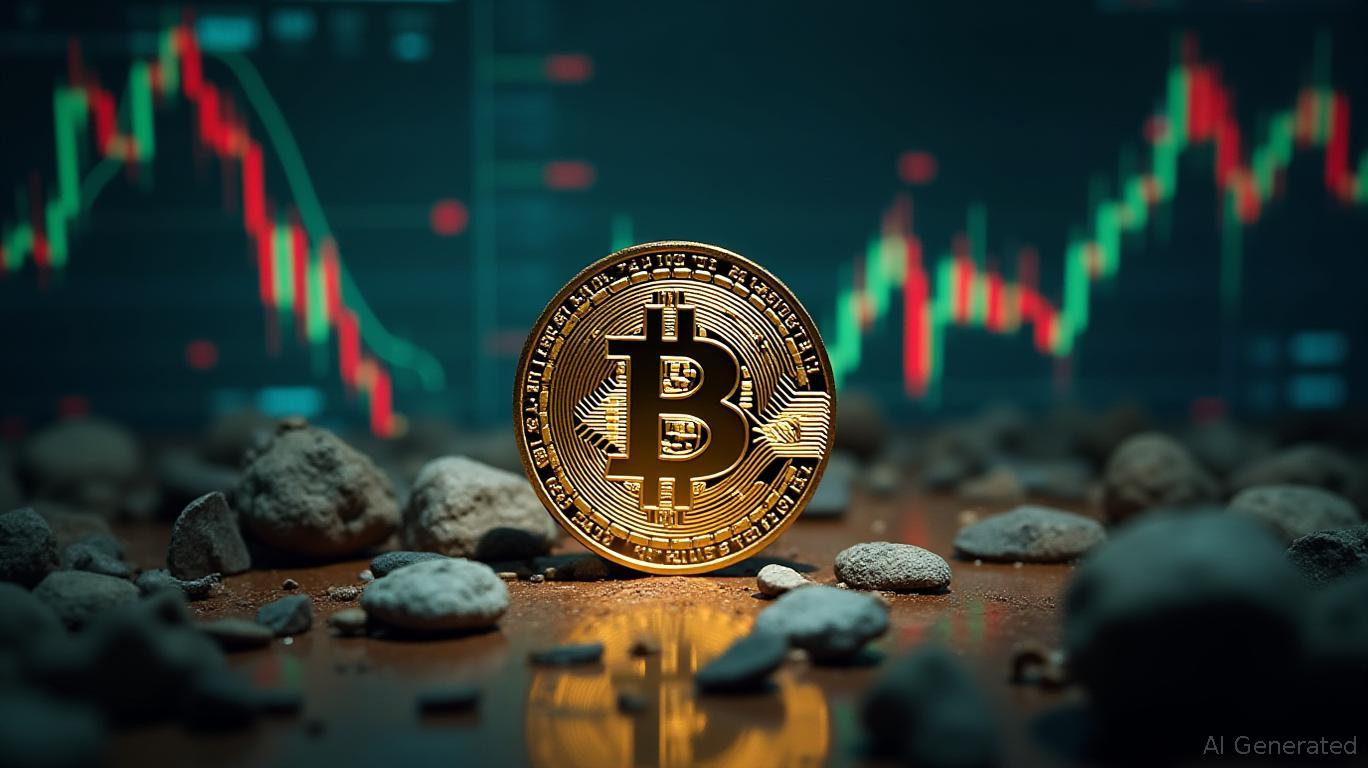Diplomatic Efforts and Technological Advancements Drive Growth in the Luxury Sector Despite Global Political Uncertainty
- Global luxury markets expand via digital innovation, with France's sector projected to grow from $23.75B to $35.97B by 2033, driven by fashion, jewelry, and tourism. - Gulf hospitality boom sees Hilton's Saudi Arabia hotel count surpass 100, while UK-GCC trade talks aim to boost luxury exports by £1.6B annually through diplomatic agreements. - Geopolitical tensions, including Trump's $70B Gaza reconstruction plan facing Gulf resistance and Saudi Arabia's oil price challenges, risk destabilizing cross-bor
The international luxury industry is experiencing notable changes, influenced by evolving consumer tastes, advancements in digital technology, and key economic collaborations. In France, the luxury market is expected to rise from $23.75 billion in 2024 to $35.97 billion by 2033, driven by strong demand for premium fashion, jewelry, beauty products, and a thriving tourism sector, as highlighted in the
Recent diplomatic and economic initiatives between the UK and Gulf states may further strengthen luxury trade. Finance Minister Rachel Reeves is scheduled to participate in Saudi Arabia's Future Investment Initiative (FII) to push forward trade negotiations with the Gulf Cooperation Council (GCC), with the goal of reaching an agreement that could boost the UK economy by £1.6 billion each year, as reported by

At the same time, political instability—especially in the Middle East—continues to introduce uncertainty. Former U.S. President Donald Trump's plan for Gaza's reconstruction, which seeks $70 billion in funding from Gulf countries, has met with hesitation from regional governments reluctant to commit funds without conditions. Saudi Arabia faces limitations due to decreased oil revenues and a move away from direct grants, while the UAE and Qatar are insisting on political assurances and safeguards against future conflicts, according to the
France's luxury industry is also being propelled by digitalization and a focus on sustainability. Leading brands such as Louis Vuitton and Chanel are embracing online sales and environmentally friendly practices to appeal to younger buyers. The country's rich cultural legacy and global brand recognition further reinforce its status as a luxury powerhouse, as outlined in the France luxury goods forecast. Nevertheless, issues like counterfeit goods and economic volatility—especially in developing markets—remain challenges to sustained growth, according to the same forecast.
The Gulf's hospitality boom highlights the region's increasing demand for luxury experiences. Hilton's targeted expansion in both major cities like Riyadh and new destinations signals a broader move toward diversifying Saudi Arabia's tourism sector. With almost two-thirds of Hilton's upcoming projects already under construction, the company is aligning itself with Saudi Arabia's Vision 2030 objectives, as mentioned in the
As the luxury sector continues to change globally, the intersection of economic diplomacy, shifting consumer trends, and geopolitical stability will determine future prospects. The UK's efforts to expand trade with the Gulf, France's positive luxury outlook, and the Middle East's hospitality surge all point to a world where luxury industries are increasingly connected to larger economic and political developments.
Disclaimer: The content of this article solely reflects the author's opinion and does not represent the platform in any capacity. This article is not intended to serve as a reference for making investment decisions.
You may also like
Tech Industry Relieved as U.S.-China Agreement Temporarily Halts Rare Earth Export Restrictions
- U.S. and China agree to a one-year trade framework suspending key tariffs and rare earth export controls to ease tensions. - The deal avoids a 100% U.S. tariff on Chinese goods and delays China's rare earth restrictions critical to tech and defense sectors. - China resumes soybean purchases, benefiting U.S. farmers, while U.S. reduces fentanyl-related tariffs from 20% to 10%. - Success hinges on China's enforcement of rare earth policies and U.S. adherence to export controls, per analysts.

BCH Facing a Turning Point: Upward Drive Meets Key Resistance
- Bitcoin Cash (BCH) approaches $565.1 resistance with technical indicators and derivatives data signaling bullish momentum. - Whale activity and positive funding rates (0.0007%) suggest growing long positions, historically preceding BCH rallies. - A successful breakout could target $651, but failure risks retesting $542.3 support amid 3.5% price volatility. - Derivatives sentiment (1.14 long/short ratio) and expanding MACD histogram reinforce cautious optimism for near-term accumulation.

Bitcoin News Update: Crypto Whale’s Bold Leverage Strategy: Unbroken Winning Run Challenges Market Volatility
- A crypto whale (0xc2a) has achieved 14 consecutive profitable trades, amassing $320M in gains via leveraged BTC/ETH/SOL positions. - Its $366M ETH long position (5x leverage) shows $8.87M unrealized gains, contrasting with profit-taking by other whales like BTC OG. - The whale's $234M BTC exposure (2,041.54 BTC) and $114M 13x leveraged long highlight aggressive institutional-grade strategies in volatile markets. - Market uncertainty around Fed rate decisions and geopolitical risks sees traders split betw

Bitcoin News Update: U.S. and China Reach Trade Agreement, Preventing Tariff Increase and Calming Global Market Concerns
- U.S. and China agree to delay 100% tariffs and suspend rare earth export restrictions, easing global supply chain pressures. - The deal includes resuming U.S. soybean purchases and canceling "fentanyl tariffs," stabilizing bilateral trade ahead of Trump-Xi APEC meeting. - Cryptocurrency markets react with mixed signals, as Bitcoin rises 1.8% amid safe-haven demand, but a $11B whale opens a leveraged short risking $2.6M losses. - Analysts warn long-term success depends on resolving issues like Jimmy Lai's
